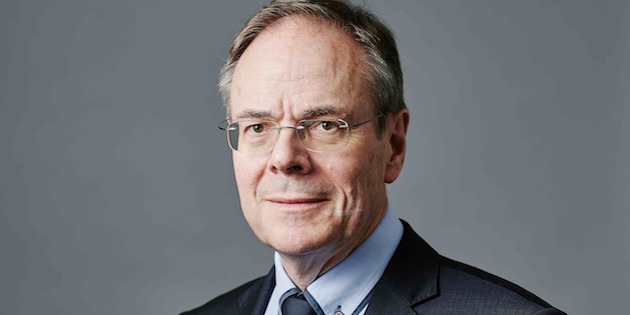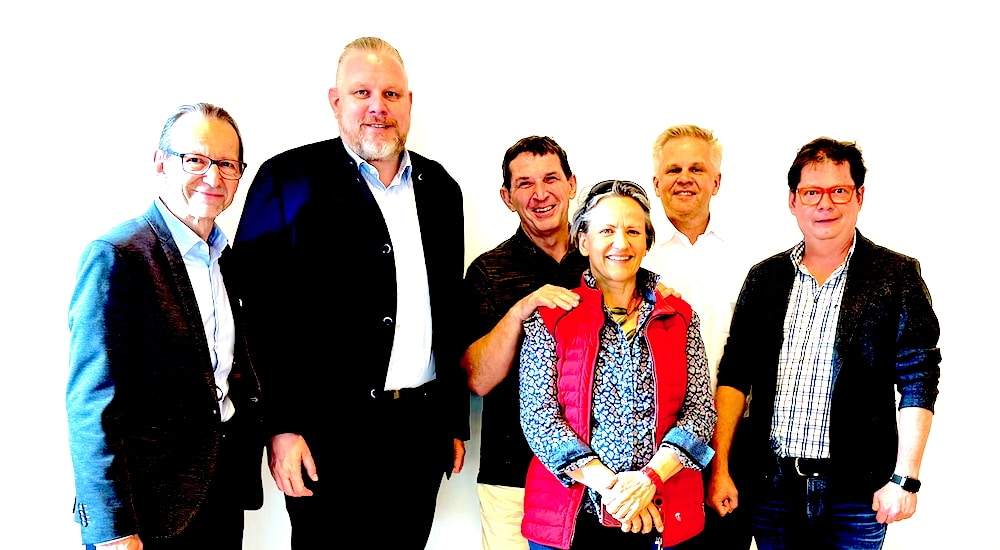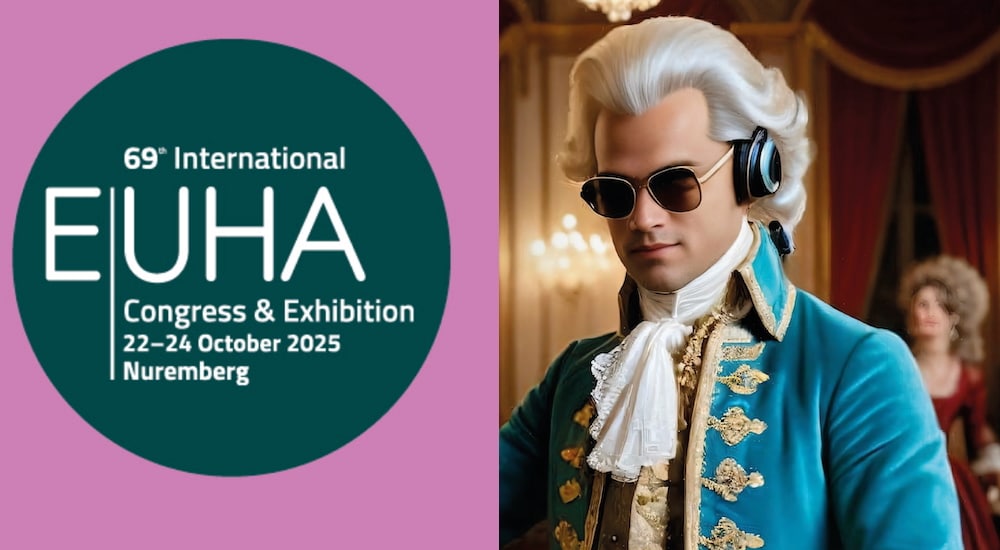Global Consensus can improve adult CI care, but professionals must boost awareness
cochlear implants
The publication in 2020 of the first international consensus on the provision of cochlear implants (CI) in adults was hailed as a landmark event. Audio Infos interviews one of the authors of these consensus statements, Prof. Robert Lenarz.

For the first time ever, global guidance for the care of hearing-impaired adults with cochlear implants (CI) has been formulated in a consensus paper. The document, which was co-drafted by a Delphi Group and a Consumer and Professional Advocacy Committee (CAPAC), outlines the minimum requirements that should inform CI care around the world from now on.
The paper’s recommendations follow a thorough process of communication between internationally renowned representatives of ENT, audiology and other professions, with important additional input from self-help represent-atives. One European member of the Delphi Steering Committee is Professor Thomas Lenarz, Chairman of the Department of Otolaryngology at Hanover Medical School (MHH) and Head of the German Hearing Centre. In this Audio Infos interview, he explains the relevance of the new guidance.
Audio Infos (AI): Professor Lenarz, this consensus paper is the first to establish a global minimum standard of CI care in adults. It contains basic recommendations that provide guidance for every country in the world. How did the paper come about and what was its aim?
Prof. Lenarz (TL): The aim was to establish a common consensus on what the standard of CI care should be for adults with severe to profound hearing loss. Experts from all over the world – both professionals and representatives of hard of hearing associations – came together to reach a common understanding. The process was led by the Delphi Steering Committee, which acted as the guiding body. This committee selected the experts, who then worked together discussing the individual points of the consensus and agreeing on the wording. All participants in the process were leaders in their respective fields. It was ensured that individual opinions or national idiosyncrasies were not used as reference points. It was important to develop a global consensus.
"There is a large discrepancy between what would potentially be possible for many patients and what has been implemented so far. "
AI: What is the significance of the consensus paper for Europe, with its often highly developed healthcare system? To what extent do countries need this guidance?
T.L.: On the one hand, some European countries have taken on a pioneering role for decades. Some have excellent centres for cochlear implantation, which are characterised both by the high quality of the entire care process and by very good outcomes. Here, experts from a wide range of fields work together on diagnostics and on the care of hearing-impaired clients to achieve the best possible results. They are also significantly involved in innovation and in expanding CI indication criteria. Innovations are tested there and further advanced based on the clinical results obtained.
However, on the other hand, there are also clear opportunities here. Out of those patients who may benefit from these innovations in hearing diagnos-tics and therapy, unfortunately only a small percentage have received care to date. There is a large discrepancy between what would potentially be possible for many patients and what has been implemented so far. This discrepancy shows that we also have a problem with implementing a good standard of care and providing it for all affected individuals.

AI: What steps should be taken to effectively address this problem?
T.L.: In order to raise the general acceptance of CI care and thus to implement a standard of care, the first step must be to raise awareness of the issue of hearing loss, in such a way that reflects the prevalence and socio-economic impact of hearing loss. The issue must be considered much more as a major societal health problem, and one that plays an important role within the healthcare system.Hearing loss must not be seen in the niche of a rather minor disability that can be neglected if necessary. The affected patient group is not small. If we take the current indication criteria for cochlear implantation as a basis, there are about one million affected people in Germany alone. However, only four to five percent of adult candidates have received CI treatment. In other words, the discrepancy between what is possible and feasible with acceptable risks, and what has been achieved to date is enormous. Furthermore, there is a need for far greater public aware-ness of the consequences of hearing loss.
AI: What consequences do you mean?
T.L: It’s not just about having to turn up the TV at home and ask the person you’re talking to more often. What is much more serious is that hearing loss makes people lonely – it prevents them from seeking out certain con-tacts, causes them to withdraw, and gradually limits their circle of life and consequently also their quality of life. This increasing isolation in turn leads to reduced cognitive abilities, as those affected no longer expose themselves to certain challenges.Any hearing loss impedes or prevents effective commu-nication, and therefore has an impact either at school or at work. It also has a massive impact on the mental performance of those affected. Hearing loss is the most important single factor in the formation or progression of dementia.
Raising awareness of all of this would make a decisive contribution to ensuring that all people with CI indica-tions are actually offered treatment, that they are made aware of the possibilities and of the risks associated with treatment, and that far more affected people are able to benefit from treatment.
"We need increased awareness in society, especially among decision-makers. "
AI: To what extent can the hearing-impaired community contribute to this increased awareness?
T.L.: This community is the most important lobby group for bringing the issue of hearing loss even more to the attention of society. There are many positive examples within this community. These people have experience with a particular method of diagnosis and treatment. Many of them are able to report on the benefits they have experienced after receiving a hearing implant. They can also communicate this to the outside world.However, communicating about the topic is accompanied by a major challenge. Being hard of hearing also means being impaired in one’s own communication. How do you communicate this so that other people who do not have this disability accept it as a significant issue and also realise that they themselves could be affected by hearing loss in the future?
We need increased awareness in society, especially among decision-makers. After a certain age, hearing loss is the most common disability. It is essential that this is communicated, both for the hearing impaired themselves and for the experts.And the positive thing that we absolutely have to com-municate is the fact that hearing loss can be treated.

AI: And what about those hearing-impaired people who are not yet receiving the best possible care? How could they be supported even better? Who needs to know what can be done for them?
T.L.: Every hearing-impaired patient is initially completely alone with their hearing loss. They need contacts who support them and offer guidance. They need to know that there is no reason to hide their disability, and that there are many people out there who feel the way they do. And they need to know that they can do something, that effective therapies are available: “The treatment is safe. You can get it too. And the anticipated outcome is that you will hear better than you hear now.”However, ensuring that patients are aware of this takes a variety of professionals. They need to demonstrate to the patient what the causes and effects of hearing loss are and inform them about the diagnostic and therapeutic options. Significant others can also play an important role here.
AI: At what point should the work of the healthcare professionals begin?
T.L.: Information provided by professionals should already start with the GP. In addition, ENT doctors, audiologists and hearing care professionals are potential primary contacts. They are all responsible for providing the hearing-impaired person with information in such a way that they do not withdraw. Patients shouldn’t be afraid of the diagnosis: “I am hard of hearing.” Instead, they should say, “Okay, I’m going to address this. I see that others are also using different hearing solutions, and they are better off with them. It’s obviously better to actively address the problem than to avoid it."
Of course, this means that the various healthcare pro-fessionals have to be well-informed themselves. They need to know the options that are available and how to steer the client in the right direction – towards an appropriate expert. In Germany, we have a large number of ENT doctors, hearing care specialists and clinics, and we have established centres for treating hearing loss. However, to achieve the standard of care formulated in the consensus paper, all groups of experts must work together in a joint network.
AI: What kind of network does this need to be?
T.L.: First of all, this network is the primary point of con-tact; it is where the patient will go to find information and seek a solution to their problem It is also important that the patient has access to the various levels of expertise within the network. Each group of experts has its own roles and responsibilities. The GP may be the place where the issue of hearing loss is first raised. The ENT doctor can differentiate between the most important forms of hearing loss and, on this basis, signpost the client towards further diagnostics and therapy. Furthermore, audiologists do not only advocate one particular type of therapy. They also have the technical expertise to provide further assistance to people who have been fitted with a cochlear implant. They can check the technology, provide spare parts or accessories, and provide aftercare.
All levels must be intertwined, and it must be possible to permeate the system in all directions. For example, the patient must be able to make their way from the ENT doctor to the ENT clinic where their hearing loss can be treated. And likewise, the pathway must also exist in the other direction. To ensure the successful treatment and continuous follow-up of the patient, all groups of experts must work together.
AI: And, to conclude, what do you feel needs to be done so that this standard of care can be established?
T.L.: The primary aim must be to motivate decision makers, politicians, and funders to deal with the issue appropriately, to provide the necessary resources and to ensure good conditions for hearing-impaired people within society generally. A secondary aim relates to the provision of care within the aforementioned network, in which all expertise intertwines and is permeable in every direction. And thirdly, there is also a requirement on the people affected – they need to know the options that are available to them with cochlear implants. And, if necessary, they should also actively support the candidates in their decision-making process.
The consensus statements and tools to increase aware-ness about standard of care for adults with hearing loss are available at www.adulthearing.com
Source: Audio Infos UK issue 142 May-June 2021
 Sign in
Sign in

